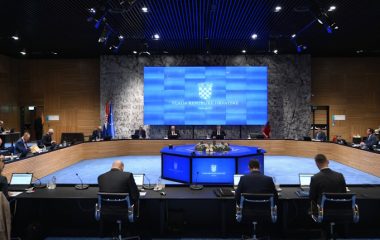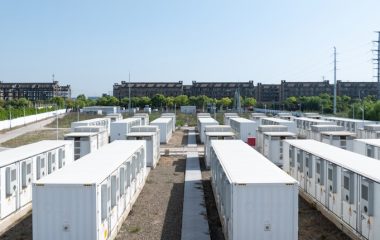
Photo: MEPX
Share
Share
Author: Dejan Drašković, Chief Operating Officer, Montenegrin Power Exchange
Since their emergence, power exchanges have become staunch promoters of market development: neutral entities advocating transparent electricity price formation, based on the current supply and demand. In order to find and secure liquidity, exchanges quickly started taking part in cross-border projects so as to carry out market coupling and expand their energy markets, as well as boost supply and demand, thereby enhancing Europe’s energy scene.
Advantages of a large single regional market
The Energy Community has many activities aimed at supporting the development of a regional market covering the Western Balkan 6 (WB6), with concrete project activities set out in the work program (technical assistance to support the development of a regional energy market in the Western Balkans) expected to result in the establishment and operation of a regional electricity market whose ultimate goal would be to integrate with a harmonized European market. A market that would be aimed at enhancing the entire region’s liquidity, efficiency in balancing supply and demand and social welfare, and achieving a real price, ruling out the option of energy price manipulation or rigging, which would optimize the overall benefits and increase transparency.
Advantages of a large single regional market would include not only strong supply and demand, but also orderliness: a single set of rules mandatory for all participants; a single subscription; single membership; a huge single connected system living, working, and breathing as a whole with the same and equal rules for all. It would be like using your mobile phone while roaming in all countries in the region, but rather than pay roaming charges, you would only pay the price charged domestically, on your own network. This would be the advantage of a large single market.
Obstacles
However, for this seemingly simple, yet apparently utopian idea to be realized, many obligations need to be tackled. These include incentives for production from renewable energy sources, with producers flocking thanks to subsidies; the shutdown or overhaul of old thermal or nuclear facilities; reporting all market-affecting data, such as power plants’ failures and overhauls, repair forecasts, and likelihood of completing a repair as envisaged; unifying legislation and rules; aligning regulatory aspects; etc.
In the new world created by the formula “energy x delivery time = market product,” all this information has been transformed into percentages affecting the price to some extent. In theory, these obligations, once resolved and regulated, would eventually result in the “ultimate battle,” which is suppliers’ battle for every last consumer, or the ultimate creation of market competition not only for a product on the market, but also buyers of the product, which would result in offering the best possible terms to the buyers. Without the end buyer, a product has no value, as there is no one to sell it to. And once you regulate all the rules and eliminate all the barriers to a free market, what remains is this ultimate battle, the best possible quality, and improved supply for each individual consumer.
Impact of renewable energy sources
This inevitably raises the issue of renewable energy sources. What will their impact on the future market be?
The impact will be huge, as huge investments and subsidies are currently channeled into boosting the share of renewable energy sources, which means the construction of new solar and wind energy facilities. Pure energy, without polluting by-products… These are the phrases we most often hear.
From the energy standpoint, we arrive at the fact that the construction focus is no longer on base load plants, such as coal-fired or nuclear plants, whose cost of producing a MWh of electricity is far below the cost of energy obtained from renewable sources, which means that base load plants are far more cost-effective.Still, the focus is no longer on base load plants, even if state-of-the-art environmental protection standards are to be observed – and this is less due to pollution, which is a minor factor, and more due to the fact that there are no subsidies for these facilities.
However, from the market standpoint, any increase in supply must drive the price down if there is no sufficient demand, and therefore, in terms of a regional market, the construction of any new facility to offer energy on the single market, is more than welcome. Moreover, the regional market will not only trade in energy as a classic product, but will also have to include a market for guarantees of origin for energy, as well as for CO2 emissions.
Cooperation between SEEPEX and HUPX is a major step
I must note that the announcement released on February 7 in Belgrade, Budapest, and Paris concerning the creation of a joint company by the founders of EMS, MAVIR, HUPX, EPEX, and SEEPEX, taking bold and pioneer strides to what is obviously the first market coupling project in the WB6 region, marks a major step toward the establishment of a regional market. This is big news for the entire region, especially in view of the Hungarian exchange’s liquidity and the fact that its market is one of the most complete and interesting in the region in terms of supply and realization.
The construction of the submarine cable between Montenegro and Italy will ensure the outlines of the regional market’s integration with the European market finally take shape. WG AIMS, a working group under the auspices of the Energy Community’s Secretariat, has been established to prepare countries in the region for this – its goal is market coupling among the working group’s members: Albania, Italy, Montenegro, and Serbia.
Italy, as a country with experience in cross-border cooperation and already implemented market coupling projects with all of its neighbors, and a country with six price zones within a single national zone, will help countries in the Balkans with its knowledge and experience to remove obstacles at the technical, legal, and regulatory levels, so that the project’s end-goal can be achieved, that of integrating the region with Italy, i.e. integrating the Balkan market with the European one with the aim of creating a wider pan-European regional market. This would mean a new connection between the Balkans and Europe.
Balkan energy gate to Italy
As far as the Montenegrin Power Exchange (MEPX) is concerned, we are a completely new player in the regional arena, and our goal is to develop an organized day-ahead market and implement market coupling with at least one of the countries in the region. We are currently in the final phase of technical assistance by the Energy Community’s Secretariat, which I must note has provided great support from the outset of the project, and are expected to very quickly embark upon the realization of one of our primary goals, which is to find a strategic partner with know-how and experience needed to significantly help us in the initial phase to implement operating processes and new technical solutions as soon as possible.
We are aware of our position, as in the current setting, we are practically the Balkan energy gate to Italy. We hope the project of linking Italy and the Balkans will foster much stronger competition in terms of energy supply and demand, which would ultimately lead to a better supply and therefore better terms for end users. Our goal is primarily to create new business opportunities for all market players and ensure improved efficiency, more competitive prices, and a higher level of security, quality and standard of services. All this would be done in an anonymous, transparent, and optional way for all companies and partners meeting market requirements, as participation in the exchange is not mandatory.









Be the first one to comment on this article.